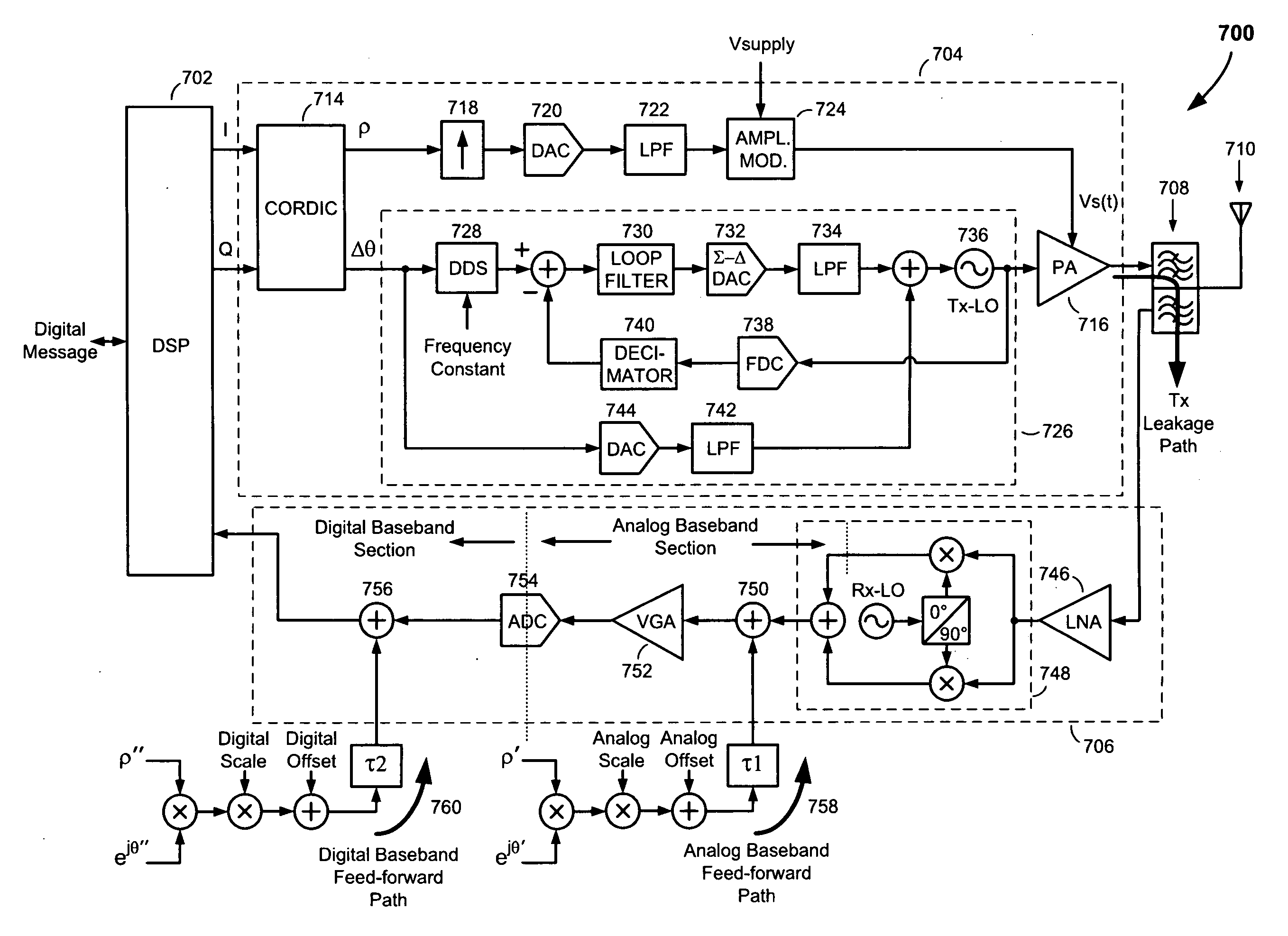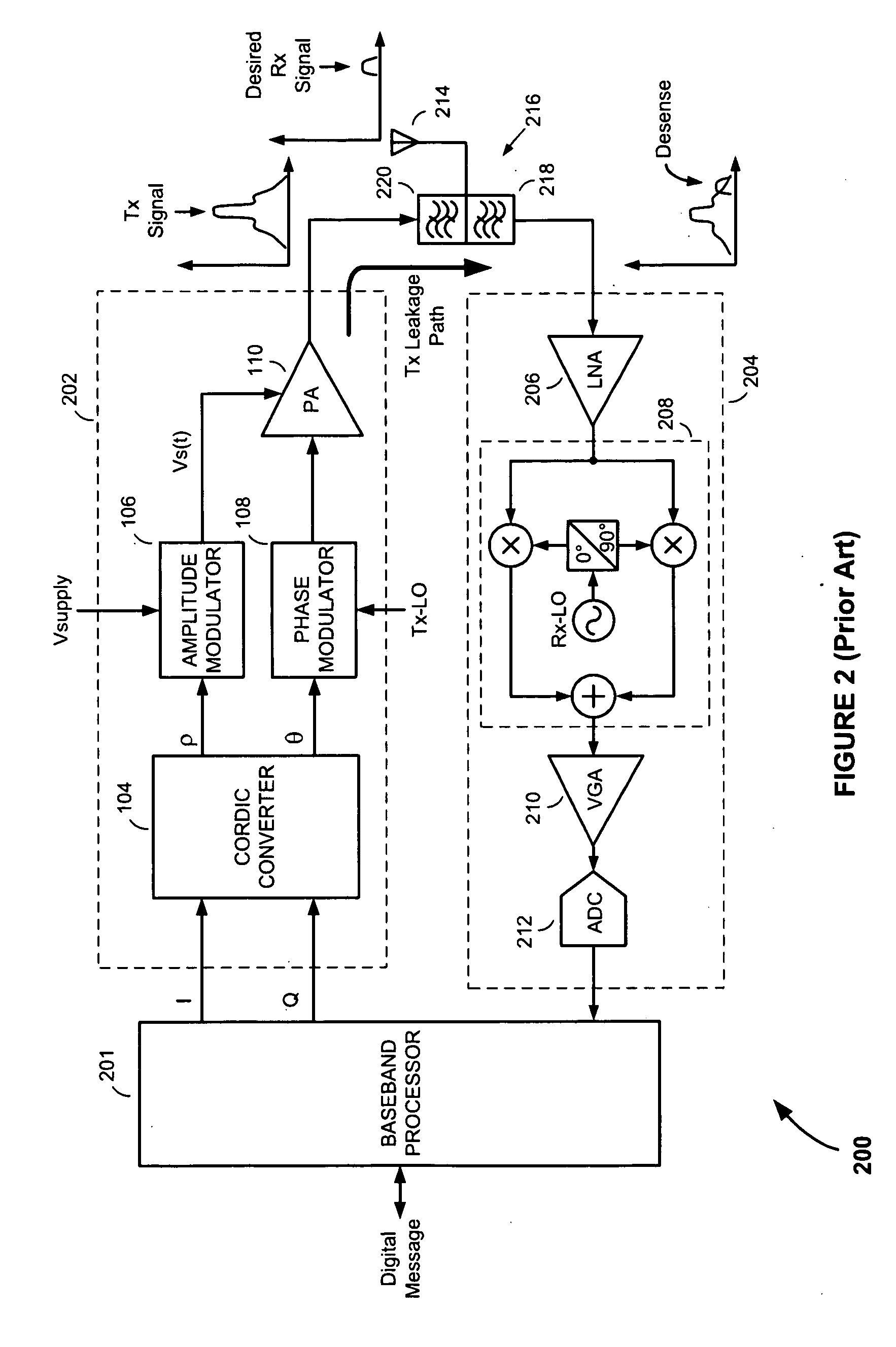Methods and Apparatus for Reducing Receive Band Noise in Communications Transceivers
a technology of communication transceivers and receive band noise, applied in electrical equipment, radio transmission, transmission monitoring, etc., can solve the problems of limited and highly regulated radio frequency spectrum, difficult to achieve the best use of radio frequency, and present challenges, so as to reduce the receive band noise in the received signal, and reduce the receive band nois
- Summary
- Abstract
- Description
- Claims
- Application Information
AI Technical Summary
Benefits of technology
Problems solved by technology
Method used
Image
Examples
Embodiment Construction
[0034]Referring to FIG. 7, there is shown a full-duplex transceiver 700, according to an embodiment of the present invention. The full-duplex transceiver 700 comprises a digital signal processor (DSP) 702; a polar transmitter portion 704 configured in a transmit (Tx) path; a receiver portion 706 configured in a receive (Rx) path; a duplexer 708 and an antenna 710. According to one embodiment, the transceiver 700 comprises a multi-band and / or multi-mode transceiver capable of transmitting and receiving in various Tx and Rx frequency bands and / or according to multiple modulation schemes.
[0035]The DSP 702 of the full-duplex transceiver 700 is responsible for performing the digital baseband processing functions of the transmitter and receiver portions 704 and 706. The DSP 702 is implemented in hardware or a combination of hardware and software, and comprises a microprocessor, microcontroller, other programmable integrated circuit (such as a field-programmable gate array) or an applicati...
PUM
 Login to View More
Login to View More Abstract
Description
Claims
Application Information
 Login to View More
Login to View More - R&D
- Intellectual Property
- Life Sciences
- Materials
- Tech Scout
- Unparalleled Data Quality
- Higher Quality Content
- 60% Fewer Hallucinations
Browse by: Latest US Patents, China's latest patents, Technical Efficacy Thesaurus, Application Domain, Technology Topic, Popular Technical Reports.
© 2025 PatSnap. All rights reserved.Legal|Privacy policy|Modern Slavery Act Transparency Statement|Sitemap|About US| Contact US: help@patsnap.com



